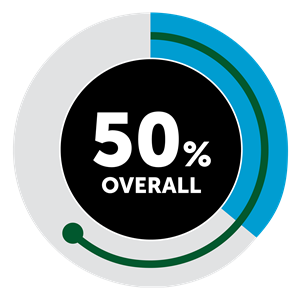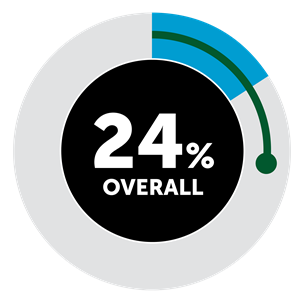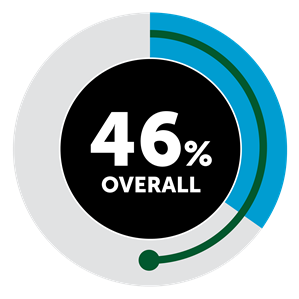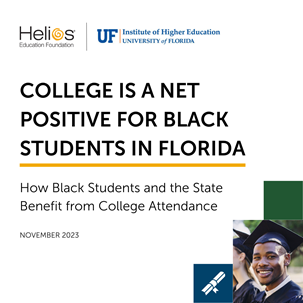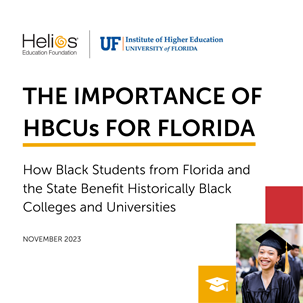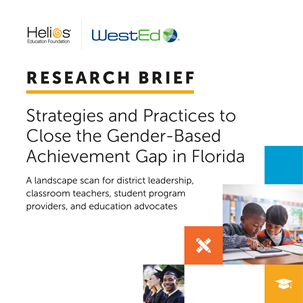
Florida Black Student Success Strategy
Helios Education Foundation aims to accelerate the pace of change in Florida by focusing on specific populations—low-income and Black students. Data show that increasing achievement rates for these specific subpopulations is the most effective way to achieve equity for all students.

Why is Helios focused on low-income and Black students?
In short, these are the largest populations of students struggling the most. In Florida, Black students comprise the largest subpopulation that needs the most help, particularly in our three target communities (Tampa Bay, Central Florida, and South Florida). While more than half (54 percent) of Florida third-graders read on grade level, that percentage has gone down since 2019 (58 percent), and significant gaps persist for Black (37 percent) and low-income (45 percent) students. Among the three major public universities in our target communities (University of Central Florida, University of South Florida, and Florida International University), Black students are significantly underrepresented (10.6 percent), as compared to Latino students (37.2 percent) and White students (34.9 percent).
That is why, for the next five years, Helios is zeroing in on improving outcomes for low-income and Black students in Florida. To increase college graduation rates for these students—and use what we learn to increase achievement for all students—we are focusing on three key drivers essential to getting these subpopulations on track for college attainment:
- Ensure that students are reading by the third grade
- Increase college enrollments
- Increase attainment of two- and four-year college degrees
We are focusing on these three drivers because we believe that they provide the best leverage for ensuring that students are prepared for and on the path to a college degree. Ultimately, Helios seeks to ensure that all children in Florida have the full potential to succeed in an educational pathway that will take them where they want to go.
THIRD-GRADE READING
36% of Black third graders are reading on grade level compared to 61% of white third graders.
COLLEGE-GOING
16% of Black high school graduates enroll at a four-year college after graduation within 16 months, compared to 27% of white high school graduates.
POSTSECONDARY ATTAINMENT
35% of Black residents ages 25–64 have a degree from a two- or four-year college compared to 50% of white residents
In 2022-2023, Florida implemented the new FAST assessment. This chart reflects the first year of data for that assessment.
Florida Education Research
College is a Net Positive for Black Students in Florida
There are clear and compelling advantages associated with college attendance that not only benefit Black students, but the state of Florida as well. Released in a two-part study, this brief explores the value of college for Black students.
The Importance of HBCUs for Florida
Black students attending Historically Black Colleges and Universities have a 40% increase in probability of earning a bachelor’s degree. Released in a two-part study, this brief revealed that HBCUs are associated with college and financial success.
Strategies and Practices to Close the Gender-Based Achievement Gap in Florida
Boys significantly lag girls in English Language Arts (ELA) throughout elementary and middle school in Florida. This brief examines ELA proficiency scores for these students and presents strategies to bridge the gap.
